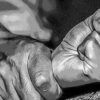LAIKIPIA, November 9 – The Kenya Wildlife Service on Saturday started the two-week movement of about 3,000 wild animals from Solio Ranch in Laikipia District to various national parks and privately-owned ranches across the country.
This follows the sale of about 15,000 acres out of 60,000 acres of the Solio Ranch.
During the first day of the exercise, a joint team of the Kenya Wildlife Service, Lewa Conservancy and Ol Pejeta conservancies captured 82 kongonis (Lelwel Hartebeests) and took them to Ol Pejeta Ranch in the same district.
The two-week operation is led by Dr Isaac Lekolool, the senior Kenya Wildlife Service senior veterinary doctor.
The sold part of the ranch has been hosting seven important species of wildlife, including the nationally endangered Lelwel Hartebeest.
The ranch, at the Southern edge of Laikipia District border with Nyeri District, has been Kenya’s major stronghold for the Lelwel hartebeest.
The animals are to be moved to Ol Pejeta Ranch, Mugie Ranch and Lewa Conservancy, all in Laikipia District as well as to Aberdare National Park in Central Province, Ruma National Park in Nyanza Province and Mwea National Reserve in Eastern Province.
The translocation will not only save the animals from the sold part of Solio, but also help in restocking other wildlife areas. This will enhance visitor experience and diversify the biodiversity.
The animals being moved include Lelwel hartebeest (a unique and rare species), plains zebra, impala, Thomson gazelle, and Oryx.
To ensure the survival of the wild animals in the new environments, a rapid assessment of potential recipient sites was undertaken by a Kenya Wildlife Service team with support from the Lewa Wildlife Conservancy.
Some of the factors the team considered included whether the site was part of the historic range of the species, availability of land, water and food as well as security, trends of predators, status of other grazing competitors. Other factors included commitment to conservation by the respective management and community relations.
KWS officials said in a statement that they have used proven mass capture techniques using a helicopter; curtained traps that lead to loading lamps attached to trucks are being used. Adequate post-release monitoring procedures have been put in place.
The numbers of the animals being moved are; Common zebra 805, Lelwel Hartebeest 250, Impala 210, Thomson’s gazelle 1,615, Oryx 36 and Eland 41.









































